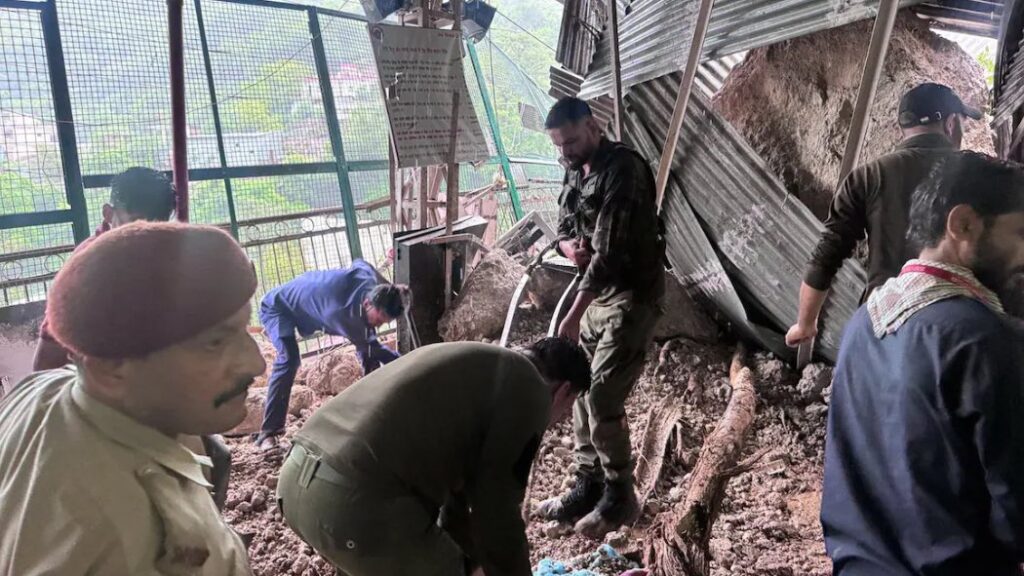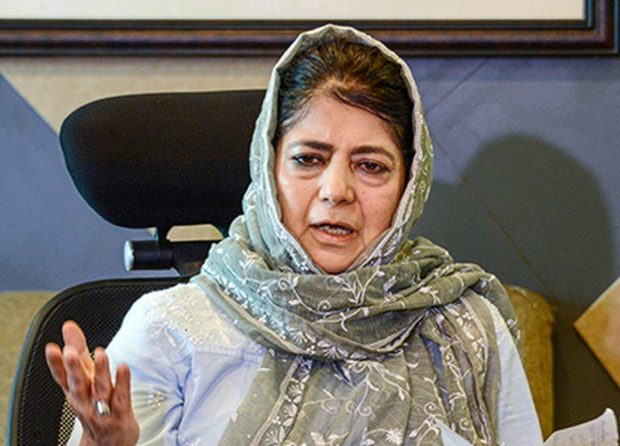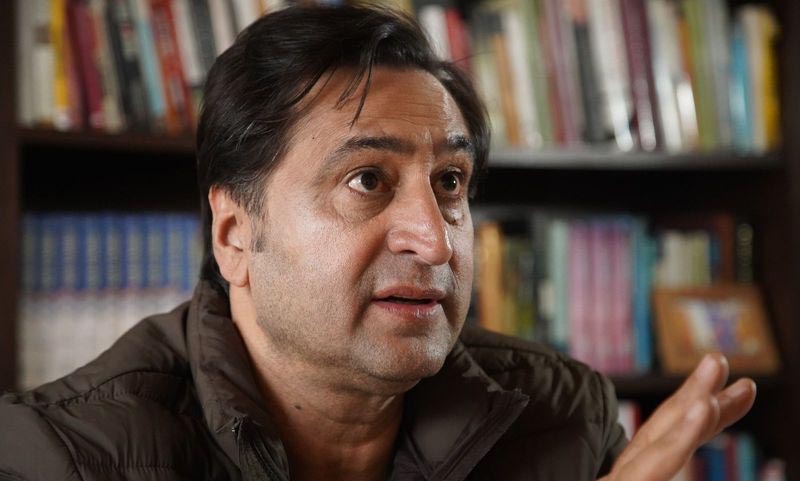Faith Meets Fragility
By: Javid Amin | 28 Aug 2025
On August 27, 2025, tragedy struck at one of India’s most revered pilgrimage sites—Shri Mata Vaishno Devi shrine in Katra, Jammu & Kashmir.
A massive landslide, triggered by relentless monsoon rains, thundered down near Ardhkuwari, a midway point along the 12-kilometer pilgrimage trek from Katra to the shrine.
By the time rescue teams cleared the rubble, 34 pilgrims had lost their lives, and dozens more were battling injuries.
The incident has not only left families shattered but also ignited a storm of criticism, protests, and questions of accountability.
For millions of devotees, the Vaishno Devi Yatra is a sacred journey of faith. But this disaster exposed how faith-driven tourism collides with fragile Himalayan ecology, poor planning, and governance lapses.
What Exactly Happened on August 27?
-
Date & Location: August 27, 2025 – near Ardhkuwari cave temple, midway to the shrine.
-
Cause: Intense monsoon downpour loosened fragile slopes of the Trikuta Hills, triggering a landslide.
-
Casualties: 34 dead, over 50 injured, with several still critical.
-
Disruption: Thousands of pilgrims stranded, yatra suspended for 48 hours.
Weather departments had issued repeated red alerts for landslides, flash floods, and cloudbursts. Yet the yatra continued uninterrupted.
A senior police officer admitted:
“This tragedy was avoidable. The administration ignored weather warnings and allowed pilgrims to trek through danger.”
The silence of precaution turned into the noise of grief.
The Role of the Shrine Board – Development vs. Safety
The Shri Mata Vaishno Devi Shrine Board (SMVDSB) manages the shrine and its facilities. Over the past decade, it has undertaken ambitious projects—new pathways, skywalks, ropeways, and wider trekking tracks.
But locals argue these projects come at a heavy cost:
-
Unregulated construction on fragile slopes.
-
Dumping of debris and materials along natural drains.
-
Destabilization of the Trikuta Hills through blasting and leveling.
The Sangarsh Samiti, a prominent civic group, squarely blamed the Shrine Board. Its chairperson, Bali Ram Rana, declared:
“The Shrine Board must be held accountable. This is not just negligence—it’s a breach of public trust.”
Public Outrage – Voices from Katra
The tragedy has fueled anger on the streets of Katra.
-
Katra Bandh: Shops and businesses shut down in protest.
-
Protest marches: Hundreds of locals and traders demanded an investigation.
-
Slogans: “Stop blind construction” and “Pilgrims’ lives matter.”
A trader at Ban Ganga put it bluntly:
“They widened paths for VIPs, built ropeways for revenue, but ignored warnings for safety. Faith is not commerce.”
The protests highlight a deeper sentiment—that sacred spaces must not become commercial zones at the cost of human lives.
Rescue, Relief & Official Response
The response was swift but too late for many.
-
Rescue Teams: The Army, NDRF, SDRF, and police worked day and night to clear debris and evacuate stranded pilgrims.
-
Medical Aid: Emergency wards in Jammu hospitals were flooded with patients.
-
Compensation:
-
The Shrine Board pledged ex-gratia and free treatment.
-
The Lieutenant Governor announced ₹10 lakh compensation for the families of the deceased.
-
Chief Ministers of affected states extended financial support and condolences.
-
Yet families of victims ask: “Can money replace a life lost due to negligence?”
Negligence or Criminal Accountability?
Deputy CM openly called the incident an act of “criminal neglect.”
Legal experts now debate:
-
Can officials be charged for ignoring red alerts?
-
Should the Shrine Board face judicial scrutiny for destabilizing slopes?
-
Is there a case for culpable homicide when warnings were ignored?
Civil society groups demand a judicial inquiry monitored by the High Court, arguing that internal probes rarely deliver accountability.
Climate Change & Himalayan Pilgrimages
Beyond governance lapses, the tragedy fits into a wider Himalayan crisis:
-
Monsoon Intensity: The Himalayas are experiencing shorter, more violent rain events instead of steady rainfall.
-
Fragile Slopes: Deforestation and construction reduce slope stability.
-
Tourism Pressure: Vaishno Devi attracts 10–12 million pilgrims annually, overwhelming local ecology.
The disaster is a reminder that pilgrimage planning in the Himalayas must integrate disaster sensitivity and ecological limits.
Lessons from Past Disasters
This isn’t the first time faith and fragility have collided:
-
2013 Kedarnath Tragedy: Cloudbursts and landslides killed thousands in Uttarakhand.
-
2022 Amarnath Yatra: Flash floods killed dozens despite early warnings.
-
2023 Joshimath Crisis: Land subsidence forced evacuation of hundreds.
Each time, experts call for “responsible pilgrimage planning.” Yet each time, commercial pressures override warnings.
The Way Forward – Safer Pilgrimages
Experts suggest a multi-pronged action plan:
-
Disaster-Sensitive Yatra Planning: Suspend pilgrimages during red alerts.
-
Transparent Accountability: Independent audits of Shrine Board projects.
-
Ecological Safeguards: Ban dumping, regulate blasting, prioritize slope stability.
-
Pilgrim Awareness: Educate yatris about risks, weather updates, and safe zones.
-
Community Role: Include locals in decision-making, as they are the first responders.
Faith must walk hand-in-hand with science and sustainability.
Human Stories – Families Forever Changed
Behind the numbers are names and faces:
-
Rakesh Sharma, 42, from Delhi, had promised his daughter he’d take her to the shrine. Both perished.
-
Poonam Devi, 28, from Bihar, survived but lost her husband. She whispered: “Vaishno Mata saved me, but why didn’t they save him?”
-
Rahul Gupta, a shopkeeper in Katra, said: “Every time I see rain now, I feel fear, not faith.”
Such stories remind us that statistics fade, but grief lingers.
FAQs: Vaishno Devi Tragedy 2025
Q1. How many people died in the Vaishno Devi landslide?
34 pilgrims lost their lives, with over 50 injured.
Q2. Why is the Shrine Board under criticism?
For ignoring weather warnings and pursuing construction projects that destabilized fragile slopes.
Q3. Were weather warnings issued before the tragedy?
Yes. Red alerts for heavy rain, cloudbursts, and landslides were issued but ignored.
Q4. How many pilgrims visit Vaishno Devi annually?
Between 10–12 million pilgrims, making it one of India’s busiest pilgrimage sites.
Q5. What steps are being demanded now?
Judicial inquiry, regulation of Shrine Board projects, disaster-sensitive planning, and stricter accountability.
Conclusion: Faith, Safety & Accountability
The Vaishno Devi tragedy of 2025 is not merely about a landslide—it is about a systemic failure.
Warnings were ignored, fragile hills were burdened with unchecked construction, and lives were lost unnecessarily.
Faith cannot be an excuse for negligence. The pilgrims who died came seeking blessings but instead found tragedy. Their loss must be a turning point—for the Shrine Board, for the administration, and for every Himalayan pilgrimage.
Unless we prioritize safety over speed, ecology over commerce, and accountability over excuses, tragedies like this will repeat.
For now, the voices of grief echo across Katra: “This was avoidable. Never again.”



